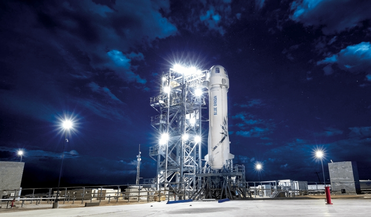 December 2018
Prosperity in the stars
December 2018
Prosperity in the stars
... presented include, astrobiology, artificial intelligence, space medicine, business innovation, human physiology in space, microgravity, artificial gravity, debris, Earth observation, small satellites, education and temporary and permanent habitation...
 February 2019
The challenge of procreation for future off-world settlers
February 2019
The challenge of procreation for future off-world settlers
... on the Moon than on Mars to reach a desired centrifugal force but never more than the 99 m/s required in the microgravity of space. The astute reader will notice a problem. If the track is 1 km in radius the circumference will be 6.28 km and, as the...
 September 2019
A new era in planetary defence missions
September 2019
A new era in planetary defence missions
... Envisat Earth-observing mission, the Hylas comsat and the Proba-V minisatellite and reported from ESA’s microgravity-reproducing parabolic aircraft and the launch site in French Guiana. An occasional comic strip writer, he is the author...
 October 2019
Skyrora – building on British space heritage
October 2019
Skyrora – building on British space heritage
...spin-off business to cater for the sounding rocket market, carrying payloads for commercial or scientific microgravity research, of up to 100 kg. It would offer several minutes of weightlessness for experiments, followed by descent, parachute landing...
 October 2019
Reusability is key to expanding future space launch business
October 2019
Reusability is key to expanding future space launch business
... (after Alan Shepard, the first American in space) and is designed to transport a crew of six people, or hundreds of kilogrammes of microgravity payload, into space and back to Earth. Our goal is to fly the first humans - our own astronauts...
 December 2019
Human conception and childbirth in space
December 2019
Human conception and childbirth in space
.... Risks in space Space is a hostile environment for most living creatures. The main risks concern radiation and microgravity. In space, the radiation environment is much more dangerous than on Earth, where we are protected by a 10 km-thick layer...